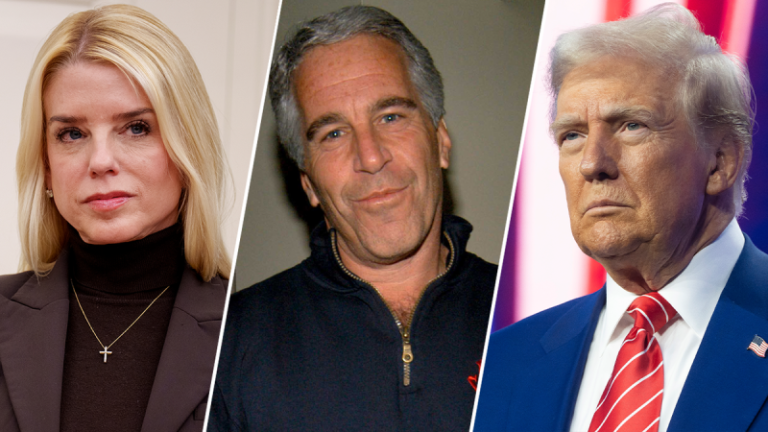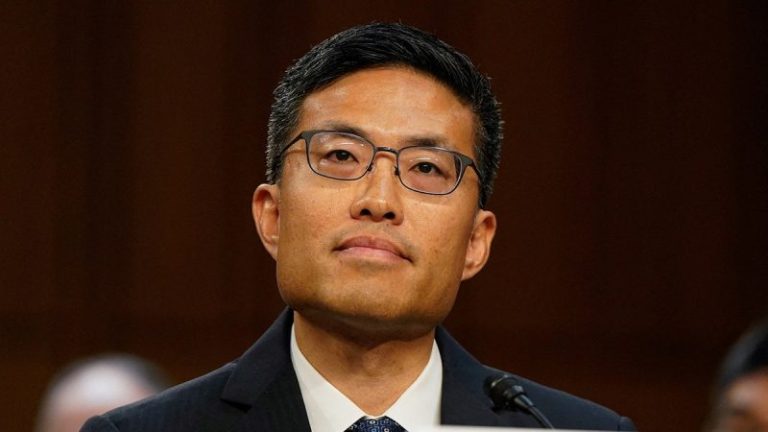Statistics Canada released July’s labor force survey on Friday (August 8). The data shows that the Canadian economy shed 41,000 workers during the month and registered a 0.2 percent decline in the employment rate to 60.7 percent.
However, the unemployment rate was unchanged at 6.9 percent.
The most significant segment for the decline was among youth aged 15 to 24, with a drop of 34,000. That pushed the youth unemployment rate up to 14.6 percent, its highest rate since September 2010 apart from the pandemic.
In terms of industry, construction saw the steepest decline as it lost 22,000 workers during the month.
South of the border, the US imposed a 39 percent tariff on imports of 1 kilogram and 100 ounce gold bars from Switzerland.
In a ruling posted to US Customs and Border Protection’s (CBP) Customs Rulings Online Search System on Friday, the CBP states that reciprocal tariffs will be applied to these bars. Switzerland is the world’s biggest refining and transit hub, and imports of the 1 kilogram and 100 ounce bars are typically used to back transactions on the COMEX.
The ruling caused some uncertainty among gold traders, who paused imports of the precious metal to the US and pushed the price for December contracts on the COMEX to a high of US$3,534 per ounce in morning trading.
While the price has since retreated, it’s still up more than 1 percent on the day at US$3,491.
The gold spot price is also up significantly this week, gaining 3.26 percent by 4:00 p.m. EDT on Friday to US$3,398.42. Silver was up even more; it rose 4.58 percent to US$38.38 and is closing in on its recent highs.
Markets and commodities react
In Canada, equity markets were in positive territory this week.
The S&P/TSX Composite Index (INDEXTSI:OSPTX) posted steady gains through the week, moving up 2.16 percent to close at 27,758.68 on Friday. The S&P/TSX Venture Composite Index (INDEXTSI:JX) registered a 2.71 percent rise to 787.22. Meanwhile, the CSE Composite Index (CSE:CSECOMP) soared, gaining 8.99 percent to 142.78.
US equity markets were broadly down on Friday on new US tariffs and poor jobs data. The S&P 500 (INDEXSP:INX) rose 1.62 percent to 6,389.44, the Nasdaq 100 (INDEXNASDAQ:NDX) jumped 2.86 percent to 23,603.05 and the Dow Jones Industrial Average (INDEXDJX:.DJI) gained 0.90 percent to 44,175.60.
In base metals, copper prices fell as low as US$4.41 per pound on Tuesday (August 5), but recovered to finish the week with a 0.67 percent gain to US$4.52.
Top Canadian mining stocks this week
How did mining stocks perform against this backdrop?
Take a look at this week’s five best-performing Canadian mining stocks below.
Stock data for this article was retrieved at 4:00 p.m. EDT on Friday using TradingView’s stock screener. Only companies trading on the TSX, TSXV and CSE with market capitalizations greater than C$10 million are included. Mineral companies within the non-energy minerals, energy minerals, process industry and producer manufacturing sectors were considered.
1. Kirkland Lake Discoveries (TSXV:KLDC)
Weekly gain: 88.24 percent
Market cap: C$15.2 million
Share price: C$0.16
Kirkland Lake Discoveries is a gold-copper explorer focused on projects in its district-scale land package located in the Kirkland Lake area of Ontario, Canada. Its holdings span approximately 38,000 hectares in the Abitibi greenstone belt, an area that holds past-producing gold and copper mines. Its land is broadly divided into KL West and KL East, which contain the Goodfish-Kirana and Lucky Strike gold projects, respectively, among others.
On April 29, the company entered a mining option agreement with Val-d’Or Mining (TSXV:VZZ) to acquire the Winnie Lake and Amikougami properties, as well as mining claim purchase agreements with two vendors to acquire further claims around the Winnie Lake Pluton. The properties expand KL West’s southern portion.
On Wednesday (August 6), the company initiated an inaugural diamond drill program at KL West and Winnie Lake. The program is designed to follow up on historic drill results as well as recent surface exploration.
About 2,000 meters of drilling are planned, and the company expects it to be completed by the end of August. Kirkland stated that assays will be released as they are received and interpreted.
2. Avanti Helium (TSXV:AVN)
Weekly gain: 78.95 percent
Market cap: C$15.2 million
Share price: C$0.17
Avanti Helium is an explorer and developer focused on advancing helium assets in Canada and the US toward production. Its Greater Knappen projects are composed of several areas in Southern Alberta, Canada, and Northern Montana, US. The combined land packages cover approximately 74,000 acres with multiple targets.
According to its project page, Avanti has drilled three exploration wells in Montana, with two testing for a combined 18.5 million cubic feet per day gas rate with 1.1 percent helium concentration.
The company’s Leader project consists of a combined land package of 91,000 acres in Southern Saskatchewan. The surrounding region has seen 84 wells drilled by other companies since 2016, and as of September 2023, it hosted approximately 25 wells producing 450,000 cubic feet of helium per day.
Avanti gained this week after it announced on Thursday (August 7) that it has signed a multi-year offtake agreement with a global industrial gas supplier. The buyer has committed to a minimum monthly volume from Avanti’s Sweetgrass helium recovery unit in Montana, for 33 percent of the initial plant output and 25 percent following a planned expansion.
3. Discovery Energy Metals (CSE:DEMC)
Weekly gain: 68.57 percent
Market cap: C$17.08 million
Share price: C$0.295
Discovery Energy Metals is a lithium explorer working to advance interests in Québec and BC, Canada. Most of the company’s land holdings are in Québec, where it has interests in over 225,000 hectares.
On March 20, the company released assays from a fall 2024 exploration program focused on its Eeyou Istchee James Bay properties. It reported values including 82 parts per million tantalum pentoxide and 101 parts per million cesium oxide at Cirrus East, and 0.66 g/t gold and 0.56 percent zinc at its Mantle property.
Discovery announced on June 25 that it had completed the acquisition of eight mineral claims over 5,283 hectares at the Crystal Lake property in BC. The company acquired the property in a deal with Zimtu Capital (TSXV:ZC).
Early stage exploration work at the property was carried out between 2009 and 2010, and included a magnetic survey and grab samples, which returned up to 0.7 percent copper with elevated gold and silver.
The most recent news from Discovery came on July 15, when it announced a non-brokered private placement for up to 10 million units for gross proceeds of up to C$1 million.
4. Abcourt Mines (TSXV:ABI)
Weekly gain: 66.67 percent
Market cap: C$45.53 million
Share price: C$0.075
Abcourt Mines is a gold exploration and development company focused on operations at its Sleeping Giant mine in the Abitibi region of Québec. The property consists of four mining leases covering an area of 458 hectares and 69 claims. The site hosts an underground mine along with a mill capable of processing 750 metric tons per day.
A July 2023 preliminary economic assessment demonstrates an after-tax net present value of US$77.5 million with an internal rate of return of 33.3 percent over a payback period of 2.2 years.
The company has been working on restarting mining operations at the site throughout 2025.
On Thursday, it provided an update on progress from Sleeping Giant, stating that teams had begun the rehabilitation of underground openings, as well as preparations at the mill for the first stope at the end of July. It also said it had built a surface stockpile of approximately 1,000 metric tons of ore and started work on a tailings facility. Once complete, pulp storage will be good until 2032 at the proposed mining rate of 100,000 to 125,000 metric tons per year.
5. Scorpio Gold (TSXV:SGN)
Weekly gain: 64.71 percent
Market cap: C$60.93 million
Share price: C$0.28
Scorpio Gold is an exploration and development company focused on the advancement of its Manhattan District in the Walker Lane Trend in Nevada, US. The district is composed of the 6,071 acre Manhattan project, which hosts two past-producing open-pit mines, Reliance and Manhattan, as well as the fully permitted Goldwedge underground mine.
Scorpio acquired the project from Kinross Gold (TSX:K,NYSE:KGC) in 2021.
The most recent update from the project came on June 19, when Scorpio announced it was commencing a Phase 1 diamond drill program. The focus is on targets at the Gap zone, the Zanzibar trend and Mustang Hill. Up to 3,400 meters have been planned, with results contributing to an initial mineral resource estimate, which is expected in Q3.
FAQs for Canadian mining stocks
What is the difference between the TSX and TSXV?
The TSX, or Toronto Stock Exchange, is used by senior companies with larger market caps, and the TSXV, or TSX Venture Exchange, is used by smaller-cap companies. Companies listed on the TSXV can graduate to the senior exchange.
How many mining companies are listed on the TSX and TSXV?
As of February 2025, there were 1,572 companies listed on the TSXV, 905 of which were mining companies. Comparatively, the TSX was home to 1,859 companies, with 181 of those being mining companies.
Together the TSX and TSXV host around 40 percent of the world’s public mining companies.
How much does it cost to list on the TSXV?
There are a variety of different fees that companies must pay to list on the TSXV, and according to the exchange, they can vary based on the transaction’s nature and complexity. The listing fee alone will most likely cost between C$10,000 to C$70,000. Accounting and auditing fees could rack up between C$25,000 and C$100,000, while legal fees are expected to be over C$75,000 and an underwriters’ commission may hit up to 12 percent.
The exchange lists a handful of other fees and expenses companies can expect, including but not limited to security commission and transfer agency fees, investor relations costs and director and officer liability insurance.
These are all just for the initial listing, of course. There are ongoing expenses once companies are trading, such as sustaining fees and additional listing fees, plus the costs associated with filing regular reports.
How do you trade on the TSXV?
Investors can trade on the TSXV the way they would trade stocks on any exchange. This means they can use a stock broker or an individual investment account to buy and sell shares of TSXV-listed companies during the exchange’s trading hours.
Article by Dean Belder; FAQs by Lauren Kelly.
Securities Disclosure: I, Dean Belder, hold no direct investment interest in any company mentioned in this article.
Securities Disclosure: I, Lauren Kelly, hold no direct investment interest in any company mentioned in this article.










